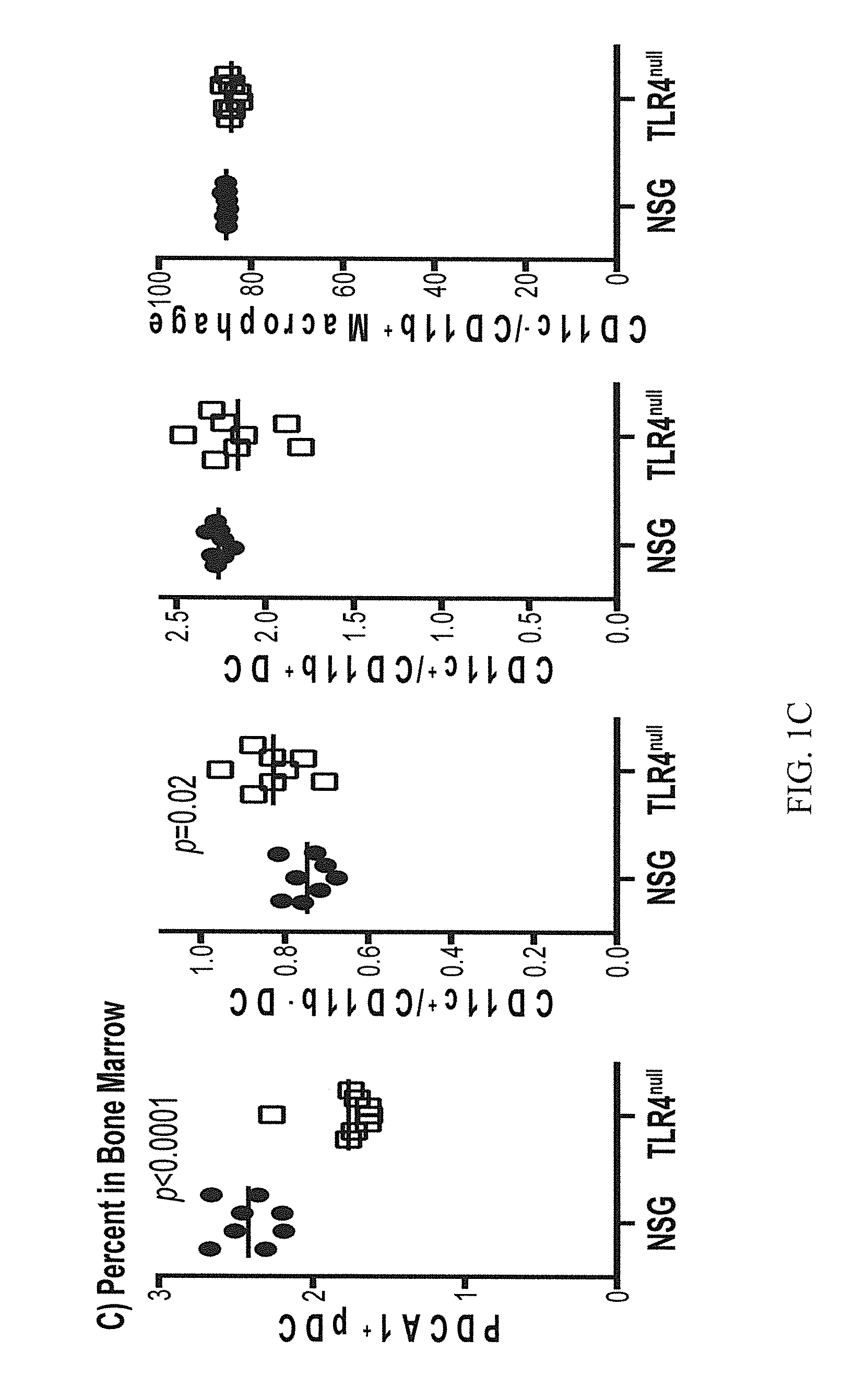Genetically modified non-human animals and methods relating to innate immune system response detection
- Summary
- Abstract
- Description
- Claims
- Application Information
AI Technical Summary
Benefits of technology
Problems solved by technology
Method used
Image
Examples
examples
[0255]Mice
[0256]NOD.Cg-PrkdcscidIl2rgtml Wjl / SzJ (NOD-scid IL2rγnull, NSG) mice and NOD.Cg-PrkdcscidIl2rgtml WjlTlr4Lps-Del (NSG-TLR4null) mice, which do not express murine TLR4, were obtained from colonies developed and maintained at The Jackson Laboratory (Bar Harbor, Me.). NOD / Lt-Tlr4Lps-Del mice are described in Wen et al., Nature, 455:1109-1113, 2008. NSG mice lacking TLR4 were generated by first crossing NOD / Lt-Tlr4Lps-Del mice with NSG mice. Further backcrosses of the F1 offspring to NSG mice were carried out to fix the Prkdcscid and Il2rgtml Wjl mutations to homozygosity. The NOD.Cg-PrkdcscidIl2rgtml WjlTlr4Lps-Del / SzJ (NSG-TLR4null) mice were maintained by matings of homozygote siblings. All animals were housed in a specific pathogen free facility, in microisolator cages, and given autoclaved food and maintained on sulfamethoxazole-trimethoprim medicated water (Goldline Laboratories, Ft. Lauderdale, Fla.) and acidified autoclaved water on alternating weeks.
[0257]Engraftment...
PUM
 Login to view more
Login to view more Abstract
Description
Claims
Application Information
 Login to view more
Login to view more - R&D Engineer
- R&D Manager
- IP Professional
- Industry Leading Data Capabilities
- Powerful AI technology
- Patent DNA Extraction
Browse by: Latest US Patents, China's latest patents, Technical Efficacy Thesaurus, Application Domain, Technology Topic.
© 2024 PatSnap. All rights reserved.Legal|Privacy policy|Modern Slavery Act Transparency Statement|Sitemap



